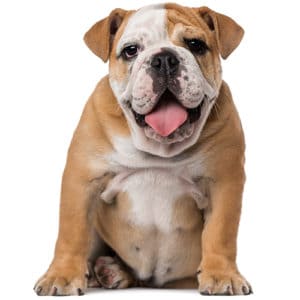
In some of our previous articles, we have covered many of the qualities that make the French Bulldog a truly fascinating breed.
Here, we’d like to help you to become even more familiar with this breed by comparing the French Bulldog to some of its closest canine relatives.
If you’re considering adding a Frenchie to your family, you should know that many people consider these breeds as well because they share similar characteristics and traits.
If you do decide that a Frenchie is the right choice, we have a comprehensive guide that will answer all of your questions in regards to raising and caring for your new pup.
The Owner’s Guide To The Perfect French Bulldog covers it all and is backed by months of detailed research.
This guide will teach you all about:
- Breeder selection and choosing the right puppy for your family.
- Puppy proofing and necessary supplies.
- Exercise needs, mental stimulation, and socialization.
- Daily maintenance and grooming.
- Health issues common to the breed.
- Crate training, housebreaking, and reward-based training.
- Avoiding common mistakes and pitfalls.
- Special tips specifically for Frenchies.
- And so much more!
Full of practical advice and expert tips, this book is the only resource you’ll need to gain the confidence and knowledge necessary to raise your Frenchie the right way.
French Bulldog
French Bulldogs are one of the most popular companion breeds. This means they were bred specifically to keep humans company and bring joy to their lives.
You can read all about them in our Complete French Bulldog Overview.
If you’ve ever seen any pictures or videos of Frenchies, you know they are quite the entertainers!

The French Bulldog is recognizably known for their thick, compact build, ‘bat-like’ ears, and extremely short snout.
The ears are a particularly important thing to check for when buying a Frenchie.
They should stand erect instead of laying down. Any other ear type is considered a disqualification by all three major kennel clubs.
This can be a problem because not all French Bulldogs have this ear type.
When Frenchies were first created, both erect and floppy ear types were common.
The bat ear was always more common, but the floppy ear (sometimes called “rose ear”) was not considered to be a real problem until 1898.
The floppy ear comes from the English Toy Bulldog, a now-extinct breed that served as the primary source breed for the French Bulldog.
If this breed still existed, it would be the French Bulldog’s closest relative.
Since that’s not the case, here are some of their closest living relatives or as some may call them, their canine cousins.
Pug Compared To French Bulldog
Although they might be confused with one another from a distance, the Pug and the Frenchie can easily be told apart on closer inspection.
For one thing, the Pug is significantly smaller. The ideal weight for a Pug is considered to be 16-18 pounds, and they aren’t quite as thickly built as the Frenchie either.

If you need a surefire way to tell these two breeds apart, there are two. First, look at the tail.
The tail of a Pug is supposed to curl over its’ back, while the tail of a Frenchie is supposed to hang low (do they really have tails?).
Breed standards specifically state that a French Bulldog cannot have a curled tail to any degree.
Second, look at the ears. The ears of a Pug do not stand up straight, as a French Bulldogs’ ears are supposed to do.
They don’t even match the “rose ear” of the old-bloodline Frenchies. The ears of a Pug are much floppier.
Another little difference is that the face of a Pug is even flatter than that of a French Bully.
These two dogs are alike in the fact that they were both developed as companion breeds.
While the French Bulldog was mainly bred to be a family dog, the Pug was created about 2,000 years ago to serve as a pet to the emperors of ancient China.
Click here to learn more about the ever-so-popular little Pug.
Boston Terrier Compared To French Bulldog
The Boston Terrier can be easily confused for a French Bulldog and vice versa.
This is mostly because the Frenchie was one of the source breeds used in the creation of the Boston Terrier. It was in the 1860s that the Boston Terrier breed began to take shape.

Originally, the Boston Terrier was one of the many bulldog-and-terrier mixes that were commonly used for horrific bloodsports like dogfighting, bullbaiting, bearbaiting, and ratting.
In an effort to create a calmer version of this dog, these early Boston Terriers were mixed with French Bulldogs to provide a more even temperament.
The Boston Terrier is a little more docile than the Frenchie, according to most owners. It also seems to be a little less stubborn.
In general, Boston Terriers are smaller than Frenchies, but this is not an absolute rule.
The Boston Terrier also lacks the distinctive “barrel-shaped” build that is common for a French Bulldog.
Both breeds do, however, love to play and will benefit from having a good variety of toys (like those in this high-quality bargain pack) available to help keep them out of trouble.
No products found.
No products found.
If you are looking for the best way to tell these breeds apart, body proportions are probably your best bet.
This 149-page ebook is the ultimate owner’s guide for the breed – packed with tips, tricks, and answers to the most popular and frequently asked questions. Avoid the frustration, lost time, and wasted money that comes with not knowing how to properly and easily care for your Frenchie.
English Bulldog Compared To French Bulldog
It would be very hard to confuse the French Bulldog with the English Bulldog. (See our English Bulldog articles here.)
Though they share a small amount of common ancestry, both of these breeds have changed significantly from their original forms.

As mentioned earlier, the toy version of the English Bulldog was the primary source breed for the French Bulldog.
However, the French cross-bred the Toy Bulldog with several other breeds to create a distinctively new breed.
The English Bulldog, though smaller than its ancestors, is still much bigger than the Frenchie.
English Bulldogs usually weigh between 45-55 pounds, making them nearly twice as large as a French Bulldog. The English Bulldog also tends to be a lot more muscular.
In terms of demeanor, English Bullies are definitely a little more territorial than their French cousins.
This may simply be due to the fact that the English Bulldog has a little more muscle to back up their territorial nature.
Both of these animals have some potential to be trained as protection dogs even though neither was created for that purpose.
The most visible differences between these breeds can be seen in their faces. The English Bulldog will never have the distinctive bat ears of the French Bully.
Likewise, the Frenchie will never have the distinctive low-hanging jowls for which the English Bully is famous.
Head over to this article for a closer look at these two breeds’ similarities and differences.
Boxer Compared To French Bulldog
The Boxer is a very different breed when compared to the French Bulldog. While there is a huge difference in size, these two dogs share a similar facial appearance.
We can tell that there must be a little bit of common DNA here, but it couldn’t be a whole lot.

Boxers usually weight between 65-80 pounds and have a taller, slimmer body type.
They have a certain amount of taper to their underbelly, much like a greyhound (though nowhere near as extreme).
Boxers commonly have the same kind of bat ears that are required in the Frenchie.
In terms of their physical habits, these two breeds are worlds apart.
This is because the Boxer was created as a working breed instead of a companion animal.
Thus, they do not show the same degree of brachycephaly that we see in the other dogs we have discussed here.
Breathing problems and a lack of physical endurance would not be acceptable for a working dog.
Frenchies and Boxers do share a certain outgoing and gregarious nature, and both breeds are known to be pretty docile on the whole.
This is very surprising in the case of the Boxer since it is the direct descendant of an ancient German war dog called the Bullenbeisser.
You really shouldn’t need any help telling a Frenchie and a Boxer from one another.
The only possible confusion might come when you are comparing a young Boxer to an adult Frenchie. If you think this might be the case, the tails will tell the tale.
If you’re considering adding a Frenchie to the family, be sure you’re well informed about the breed. Our 30+ French Bulldog articles are packed with info to help you decide if this is the breed for you.
Related Questions:
Where did French Bulldogs originate…France?
Technically, yes. However, the French Bulldog is a modified version of the now-extinct English Toy Bulldog.
Because the modification was not a particularly large one, it would be more or less accurate to say that this breed is both English and French.
An argument could be made for the idea that this breed is purely French, and that argument would technically be correct because of the small differences that separate the French Bulldog from its English ancestor.
Do French Bulldogs make good service dogs?
French Bulldogs can potentially make good service dogs, but they may not be the best choice for all purposes.
In most cases, it will depend on what job you expect the dog to do.
As emotional therapy animals, Frenchies are a perfect fit. Providing companionship is their primary purpose, and this has always been the case.
However, the French Bulldog is not a good working dog because of its frequent respiratory issues and tendency to overheat easily.
Any task that requires a lot of physical endurance would not be well-suited for a French Bulldog.
That’s A Wrap!
We can see from our analysis that the French Bulldog is a truly unique breed. Of all its closest relatives, only one (the Boston Terrier) might realistically be mistaken for a Frenchie.
However, it wouldn’t hurt a French Bulldog owner to learn a few things about these related breeds, because dogs of similar breeding tend to behave similarly.
We hope that we have given you a few worthy insights into the nature of these breeds, and how they compare to your little Frenchie.
Last update on 2024-04-26 at 02:41 / Affiliate links / Images from Amazon Product Advertising API





